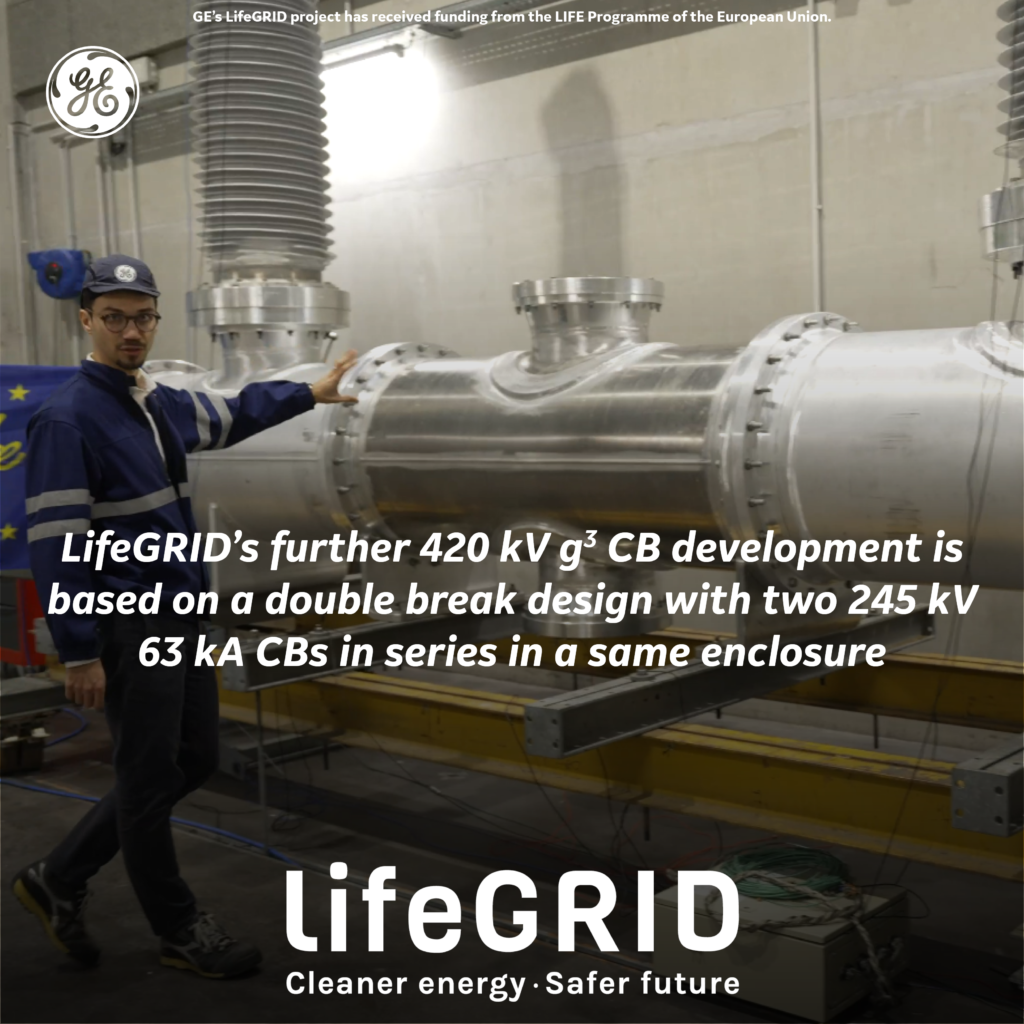- 29 March 2022
- Posted by: Lfgrd_admn_ge_2020
- Categories: CLEAN GRID, CLIMATE CHANGE, G3, SF6-FREE SOLUTIONS


In Summer 2021, GE’s LifeGRID project ended Phase 1 of its development reaching first milestones and closing the preparatory actions.
Today, after two years of intensive design, and dielectric and switching test phases to define:
- The technical feasibility and the scalability of our concept,
- The shortest development time,
- The cost of the solution,
- While keeping in mind one of our decisive criteria: same performance with same footprint and dimensions of the Gas Insulated Substation,
We are proud to announce our 420 kV SF6-free g3 circuit breaker validated design.
The LifeGRID team’s further development is now based on a double break design with two 245 kV 63 kA CBs in series in a same enclosure. This strategy was already used for previous SF6 CB developments and is well established in our industry.
As part of phase 1, we elaborated a multi-physic macroscopic numerical simulation model in collaboration with the faculty of electrical engineering of Brno (BUT) based in Czech Republic and Leibniz Institute for Plasma Science and Technology of Greifswald (INP) located in Germany.
Watch here their contribution:
The work initiated in July 2019 included different items around the definition of the plasma composition, behavior, and properties.
We want to highlight here the great collaboration between both universities and our team achieving a prodigious database about g3 gas behavior.
In parallel, a second team worked on the design of the circuit breaker. To demonstrate their ability to work properly, circuit breakers must meet standard specifications. Design adjustments of the breaking chamber were done to meet the requirements related to the g3 gas mixture. Those adjustments were firstly done by simulation: more than 60 different designs were calculated and optimized, resulting in more than 1000 different breaking calculations. Among those simulated designs, several were chosen to be tested as full-scale prototypes in an accredited laboratory, permitting to assess and demonstrate several standard test duty performances along with the design optimizations.
To complete phase 1, we firstly concentrated on a 245 kV interrupter and worked on the in-depth integration assessment at 420 kV 63 kA level.
The next steps are respectively targeting the set-up of a pilot project as well as replicability and transferability. In December 2020, grid operator Scottish Southern Energy Network (SSEN) contracted GE to implement our 420 kV g3-GIS at its Kintore 400 kV substation. Meanwhile, few grid operators have been showing interest in LifeGRID’s g3 switchgear. The circuit breaker prototype has entered its final type test and design adjustment phase, which will keep our team busy in 2022.
“420 kV SF6-free” are not just empty words for us. The EU Commission placed its confidence in our project by allocating our LifeGRID project funds from its LIFE Programme. This major milestone achievement concretizes our plan. It shows us that we are working in the right direction. We prove here that 420 kV without SF6 are reachable and replicable on other voltage levels,” comments Yannick Kieffel, LifeGRID Project Leader.
To know more about GE’s LifeGRD project, watch this 3-minute video.
